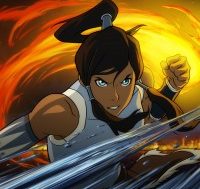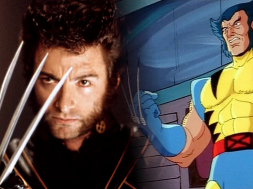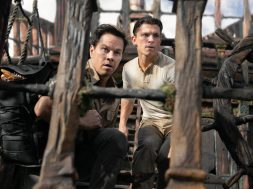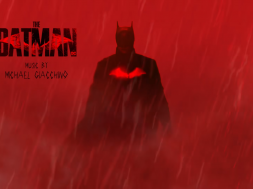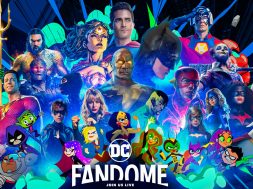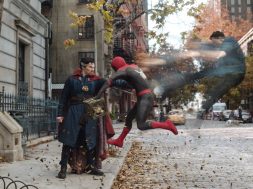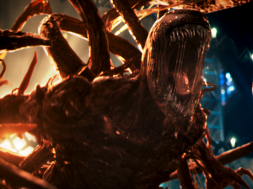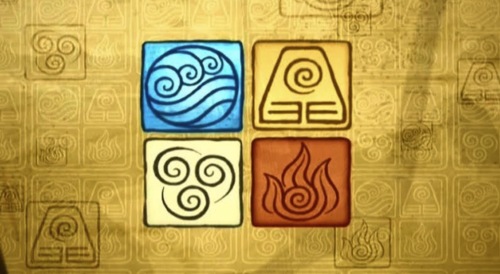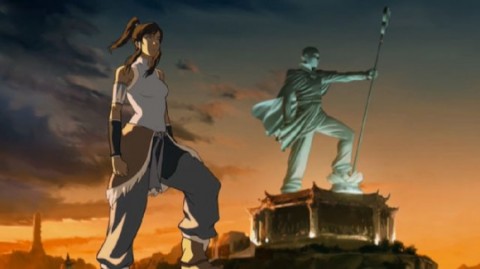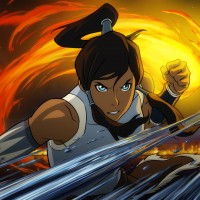
The Avatar – Aang’s Journey and Korra’s Beginning
“Do you really think friendships can last more than one lifetime?”
In 2005 the journey of Aang, a young airbender trapped in an iceberg and destined to become the Avatar began, Nickelodeon had started viewers around the world on a journey that would become legendary and then end and begin again under Korra, a water bender struggling to find inner peace. The journey would take us across the frozen Tundras of the Water Tribes, across the scorched deserts and deep valleys of the Earth Kingdom through the empty halls of lost Air Temples and into the plush islands of the Fire Nation before we find ourselves in Republic City facing a whole new world.
As we prepare for Korra’s return on the 7th July, it’s only appropriate that we look at the stories of two very different Avatars and examine the worlds they come from and the impact the shows have had on fans around the world.
Harsh truth, the Avatar series is a cartoon, a cartoon designed for the 12-18 year old demographic, so why does it have such a huge following outside it’s target audience? Aang, Korra and their companions, enemies and worlds are able to bridge the gap between all backgrounds, not just age but cultural and gender. The world they live in is very different to our own, certain people possess the ability to manipulate and control the elements, these Benders are powerful beings capabale of miraculous feats of both good and evil. How does a show aimed at such a young market reach out to others?
The reasons are many and varied and it’s not tied to any single one of them but rather a culmination of these elements coming together, artwork, story telling, character development and performances all contribute to the success of the show. The timing was right in 2005 for The Last Airbender to begin with many familiar with the visual style of Japanese Anime and Manga with it’s ever growing popularity among Western audiences, the show which borrows heavily from this style incorporating Western and Eastern animation techniques and even cinematic tricks to bring it all to life on our television. The idea of West meeting East is also found in the story and folklore of the World, borrowing from philosophies, martial arts, weaponry and mixing them all together to breathe life and add depth to the world of the Avatar but we’ll get to that a little later!
In terms of the story, it works on two levels; the younger audience can laugh and share in the jokes shared between the two shows while also marvelling at the action and fight scenes but for the adult fans there is more to it than that. Let’s take an example from both shows:
Avatar ‘The Last Airbender’, we are aware that Air Nomads are extinct and when Aang travels home in the first Book he finds the Temple in ruin and the remains of his people and traces of a ferocious battle scattered everywhere – for younger audiences this is frightening but the show works quickly to move on and the episode allows them to focus on the hapless and adorable Momo. For older fans we are however faced with the genocide and slaughter of an entire race of people, a way of life snuffed out for conquest and world domination and this doesn’t just go away, each time Aang remembers his life a hundred years ago we are reminded of his loss and the fate of his people at the hands of the Fire Nation.
In the ‘Legend of Korra’, Benders and their abilities are no longer revered but are in fact the target of an anti-bender movement, ‘Equalists’ who want to see bending come to an end! The themes of discrimination and segregation are rife throughout and while they are prominent, the bigger picture the connotations between the show and reality go deeper for the older generation of Avatar fans.
The shows aren’t just about fighting using powerful abilities, epic battles and one-liners, there are messages and lessons to be learned from them both. In what feels like a throwback to late 80’s and early 90’s cartoons, the show isn’t just about entertainment but about instilling ideals and values into it’s audience – the strength of family, friendship and loyalty, learning from history and the responsibility we all have in shaping our lives and the lives of those around us. The Avatar cartoons don’t preach their messages though, it’s not done at the end before the credits with a 20 second clip, instead it works on you over the course of the series’ opting to bring you on a journey, the same ones the characters are undertaking and learning these lessons along side them.
As mentioned earlier the shows incorporate various cultures and philosophies, influencing not only the fighting styles of Bending, the architecture, fashion and lifestyle of the different countries within the World but also on the development of the characters and their beliefs. Buddhism and Hinduism are evident throughout both shows as is Taoism and Shinto but we even see Mesoamerican culture and practices featured, the Equalists in Korra could be easily compared to the Communist Movement. All of these beliefs have impacted the way in which the show was developed and add both intelligence and depth the design and execution of both Aangs and Korras adventures
In terms of the shows maturity, they both deal with death and loss, betrayal unrequited love, mental illness while bringing up issues like political activism, absolute power and corruption and at this point you are probably thinking this guy has read too much into these cartoon shows but I haven’t, they are all there, not buried or hidden in subtext, they are right there out in the open drawn and coloured between the lines of every episode. Take Azula from the first show or Hiroshi from Korra, both become consumed by their goals (it would be easier to talk about Amon or Ozai here but I think the others make for a better example), they are driven to utter fanaticism with Azula suffering from a breakdown, developing severe paranoia to the point she banishes her staff from her coronation for fear of an assassination attempt before trying to kill her brother Zuko and Katara and Hiroshi hellbent on enacting his revenge on all benders attacks his own daughter after laying siege to Republic City.
We also witness how the traumatic loss of her mother pushes Katara to breaking when she confronts her demons and sets out to take the life of the man who took her mother from her and that sadness and guilt that the usually boisterous and spirited Iroh carries inside over the loss of his only son at the Siege of Ba Sing Se – these aren’t the types of issues talked about or even mention in many ‘adult’ programmes let alone children’s television.

So as we await Korra’s highly anticipated return to our screens, I would only suggest that if you haven’t looked beyond the surface of The Last Airbender or The Legend of Korra before, that you take the time to do so now and look at the stories they told, the characters they gave life to and the impact it has had on you, as a fan.
_______________________________________________________________________________
You can look forward to more Avatar inspired articles this week as we take a look back at first season events of ‘The Legend of Korra’ in preparation for season two while also looking at the fandom and community that has sprung up around the shows not to mention or favourite episodes and characters as the Arcade devotes the next few days to the world of the ‘Avatar.
Watch The Legend of Korra Sundays at 9am only on Nickelodeon. Visit nick.co.uk/legendofkorra
Editor-in-Chief, part-time super villain and hoarder of cats. If you can’t find me writing, I’m probably in the kitchen!
